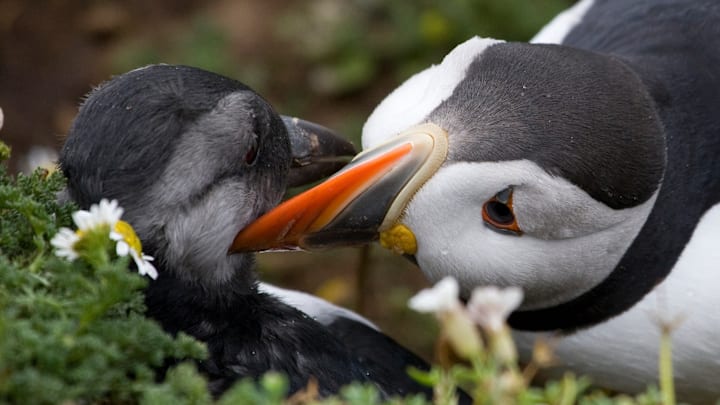Several Nordic traditions have gained attention overseas, from the Danish art of hygge to Iceland’s Christmas “book floods.“ But the Icelandic practice of tossing baby birds off cliffs at the end of the summer should probably stay local.
As NPR reports, puffling season on the Westman Islands may look alarming to outsiders unfamiliar with the annual custom. Each year, Atlantic puffins lay eggs in burrows on cliffs along the coast. The chicks spend about six weeks in their nests before they’re ready to spread their wings and take to the sea.
Young puffins are hardwired to find the ocean by following the moon’s light—an instinct that’s become life-threatening due to human development. Pufflings that fledge near towns with light pollution often end up flying inland. With no way to find their way back to shore, they can get stranded and starve.
The people of Iceland’s Westman Islands have stepped in to remedy this problem. In late summer, when the birds leave their burrows (the precise timing of puffling season varies based on yearly factors like fish population), residents can be seen patrolling the streets at night with flashlights. If they spot a juvenile puffin that lost its way, they gently pick it up with gloved hands and place it in a box.
The next day, people take pufflings to the sea cliffs where they can either place them on the ground and wait for the birds to take flight on their own, or—if they want a more dramatic send-off—toss them in the air toward the ocean. By waiting for the sun to rise to release them, they avoid the puffins confusing lights for the moon a second time. Though it looks cruel, the birds have no problem lifting off and flying safely toward their new home for the next few years.
The unusual tradition helps ensure the puffins will be back to nest another year. The birds lay one egg per season at most, so every puffin that’s rescued is significant to the survival of the species. The Westman Islands are home to the world’s largest puffin colony, so the practice is popular there, but it can be done in any town that attracts confused pufflings. Just expect to get some concerned looks if you try it for yourself.
[h/t NPR]
